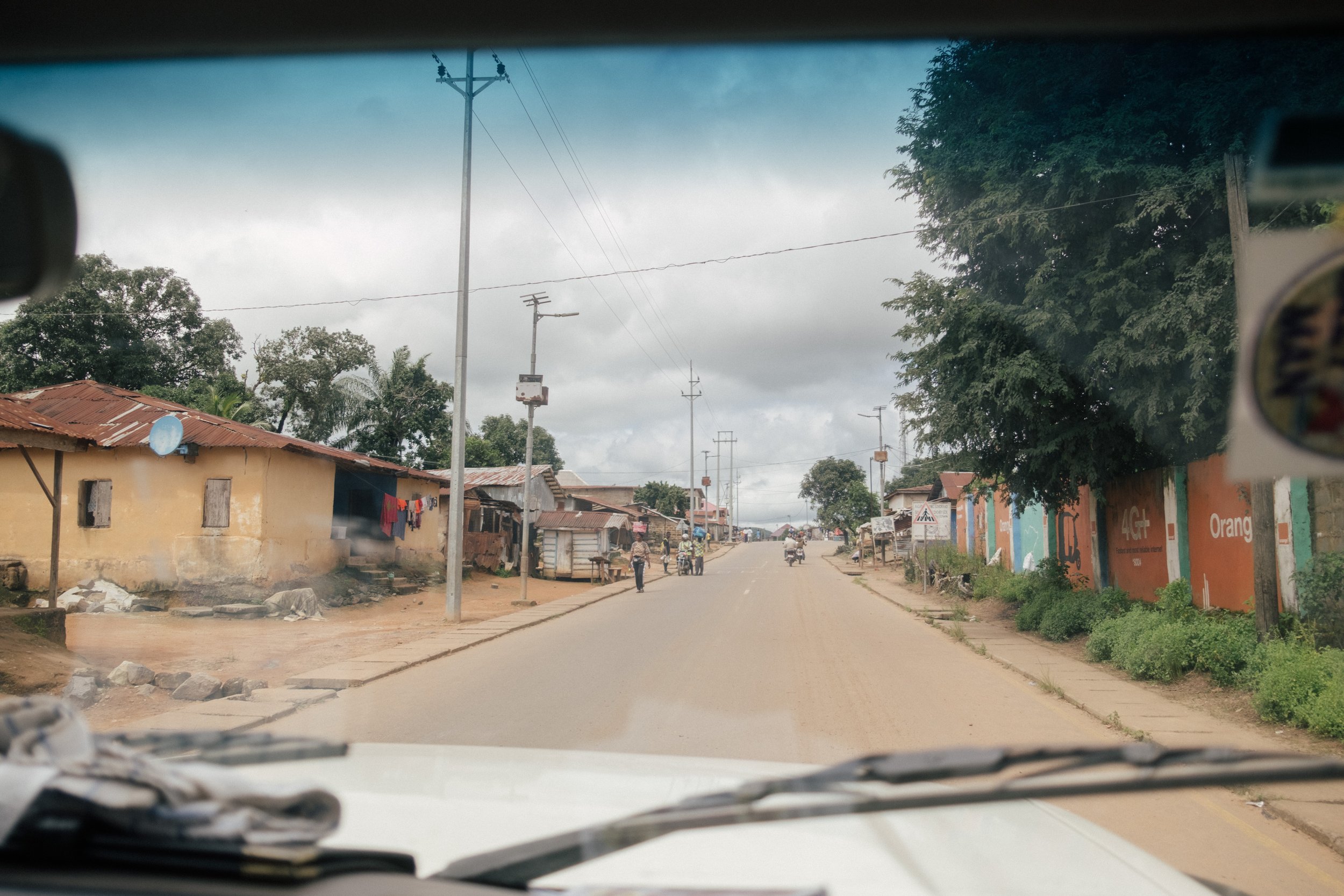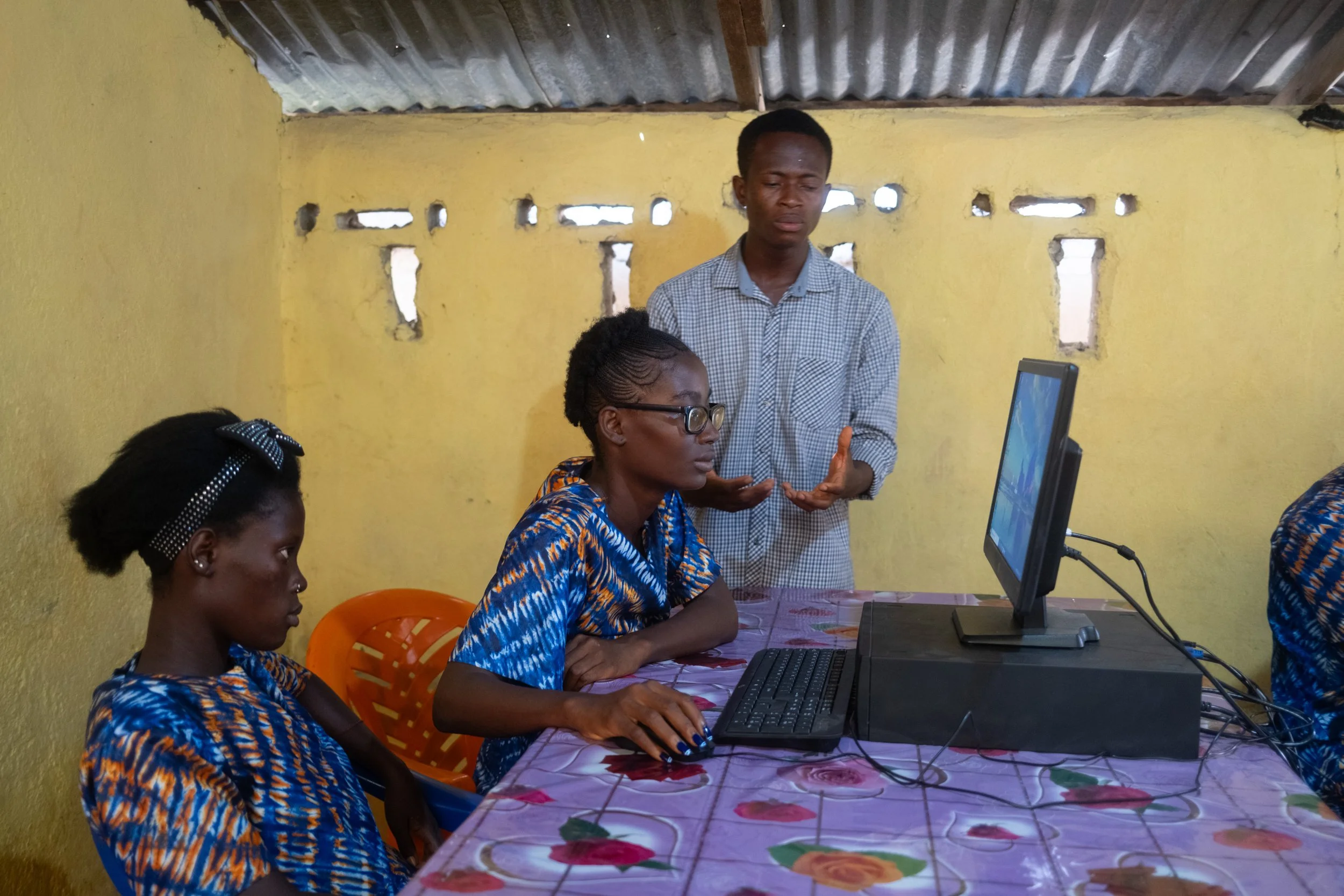The Digital Divide
The Quest to Connect
On a humid Tuesday afternoon, as Copenhagen teenagers instinctively reach for smartphones to coordinate after-school plans, a different rhythm unfolds in the informal settlements of Kono, Sierra Leone. Here, digital access isn’t a given but a quest — a series of escalating challenges. What for a young person in Copenhagen is as easy as reaching for their phone, for a young person in Kono it can be require a long list of barriers and levels of difficulty to overcome and gain the same access - and with it opportunity.
LEVEL ONE: ACCESS
The first barrier to entry isn’t a paywall but something more fundamental: infrastructure. In addition to slow connection speeds, in Kono’s settlements, electricity performs a disappearing act with disquieting regularity.
And as UNESCO reports - nearly ninety percent of students in Sub-Saharan Africa lack household computers, with eighty-two percent having no internet access at home (Source). It’s a staggering figure that collapses the distance between statistics and human experience when one considers what it means in practical terms.
The infrastructure gap isn’t just inconvenient — it’s exclusionary. When the basic access to platforms doesn’t exist, no amount of motivation can overcome its absence.
Lets imagine a young woman - for this article we call her Mariama - who can represent countless young women documented in research. For her, the nearest community center with computer access might require a long walk through areas that become precarious after sunset. Unlike her counterparts in Aalborg or Aarhus, who might complain about slow Wi-Fi at a local café, Mariama’s digital engagement begins with a fundamental question of physical safety and basic connectivity.
The innovations that emerge in response to these challenges display remarkable ingenuity: solar charging stations that continue functioning during frequent blackouts; community mesh networks constructed by residents themselves; mobile technology centers that travel to underserved areas like bookmobiles for the digital age. These aren’t conveniences but lifelines — essential infrastructure in communities where traditional development has lagged
Kono, Sierra Leone
Kono, Sierra Leone
LEVEL TWO: AFFORDABILITY
Having discovered a potential connection point, Mariama encounters another formidable opponent: economics. The research is unambiguous on this point: for many families in informal settlements, especially in countries like Sierra Leone, a basic smartphone represents an investment exceeding one hundred twenty percent of monthly income — a financial impossibility without significant sacrifice.
Data packages, the currency of this realm, deplete with alarming speed during essential tasks like homework research or job applications. The “tech tax”— that paradoxical reality where those with the least resources often pay proportionally more for technology — manifests in communities where bulk discounts and family plans remain unavailable luxuries.
For Danish teenagers accustomed to replacing their smartphones at the first sign of battery degradation or scrolling through videos without counting megabytes, the economic calculus that governs digital decisions in Kono and many other places might seem foreign. Yet understanding these constraints provides essential context for comprehending global digital inequality.
Community device-sharing programs have emerged as a practical countermeasure — digital equivalents of the shared laundry facilities familiar to Copenhagen apartment dwellers, but with significantly higher stakes. And providing access points to WiFi in the public spaces, what Dreamtown supports in many of our projects, becomes a clear change agent to bridge this aspect of the digital divide.





LEVEL THREE: SKILLS & LITERACY
With the twin hurdles of physical access and affordability tentatively overcome, Mariama encounters a landscape of unfamiliar interfaces, terminology, and concepts. The simplest operations — distinguishing between a legitimate website and a phishing attempt, formatting a document, or understanding basic search techniques — represent significant challenges for first-generation digital users.
The obstacles at this level are less visible but equally formidable: lack of foundational training; interfaces designed exclusively for major world languages; absence of experienced teachers; and the psychological barrier, researchers describe as “technophobia” — that universal fear of breaking expensive equipment that manifests with particular intensity when said equipment represents months of family income.
Organizations like Chess in Slums Africa have developed contextual approaches to address these challenges. Their innovation hub in Lagos combines strategic thinking through chess with digital literacy—building foundational cognitive skills alongside technical ones (Source) In Sierra Leone, Dreamtown is running a network of IT hubs, where digital skills get learned in conjunction with other skills like tailoring or catering. This integration of familiar local practices with new technological skills demonstrates how contextualized approaches prove far more effective than generic computer training imported without cultural adaptation and a clear focus on income generation.
For Danish youth who might struggle to recall a time before they could navigate digital interfaces, this offers a window into how technological self-efficacy — that belief in one’s ability to successfully interact with digital systems — is socially constructed rather than innate. The confidence many European teenagers take for granted represents a substantial hurdle for peers in contexts where successful role models remain scarce.
LEVEL FOUR: RELEVANCE & CONTENT
Having mastered basic navigation, Mariama now might confront a more subtle form of exclusion: an internet that doesn’t speak to her reality. Content overwhelmingly appears in languages she doesn’t speak fluently. Applications presume bandwidth capabilities and cultural contexts that don’t align with her experience. The tools exist, technically, but were designed with different users in mind.
For young people in Copenhagen or Odense, who might take for granted that their language, cultural references, and local concerns are well-represented online, the challenge of navigating a digital environment built for others offers an important lesson in privilege. The internet, despite its global reach, remains profoundly uneven in its representation of human experience.
Combining ICT skills with other skills training is an important driver for lifting many young women from informal to formal work opportunities. Pictures by Simon Sticker
LEVEL FIVE: SAFETY & SECURITY
As Mariama ventures deeper into digital spaces, new dangers emerge. The UN Conference on Trade and Development reports that many African nations still lack comprehensive cybercrime legislation, leaving new internet users particularly vulnerable to exploitation. Online harassment, data mining, and sophisticated scams pose significant risks to those navigating without experienced guidance. (Source)
For young women, these challenges intensify considerably. It is well documented, how cultural expectations and safety concerns create additional barriers, with digital resources often prioritized for male family members. The gendered dimensions of digital access — familiar even in Danish contexts where women remain underrepresented in technology fields — manifest with particular clarity in communities where resources are severely constrained.
Digital safety education programs represent essential interventions at this stage — not abstract discussions about privacy philosophy but practical strategies for surviving in digital environments where predatory practices proliferate. Peer support networks share security information, community centers implement privacy-protecting default settings, and youth-led digital ethics discussions create spaces for navigating complex online interactions.
THE FINAL CHALLENGE: SUSTAINABLE INTEGRATION
Despite all those hurdles to jump over, the ultimate challenge isn’t accessing technology once but integrating it sustainably into daily life in ways that create lasting opportunity. Here, Mariama confronts what researchers describe as “the compounding nature of digital exclusion”— how earlier barriers continue to echo even after individual hurdles are overcome.
Converting digital skills into economic opportunity, maintaining access as circumstances change, keeping pace with rapidly evolving technologies, and balancing digital engagement with other life necessities — these represent the endgame challenges where many promising digital inclusion efforts ultimately falter.
Google’s billion-dollar investment aims to boost internet access in sub-Saharan Africa, targeting seventy percent online connectivity by 2030. While promising, ensuring this infrastructure serves community needs rather than extractive interests remains a critical concern. Historical patterns suggest technology deployment without community ownership frequently benefits providers more than users — a dynamic Danish students might recognize from debates about data privacy and big tech in European contexts.
THE GAME CONTINUES
Unlike the neatly packaged experiences on PlayStation or Nintendo, the digital divide game never truly concludes. Each level must be continuously maintained while tackling new challenges. The parameters shift as technologies evolve, economic conditions change, and new barriers emerge.
Yet across Africa’s informal settlements, young people demonstrate remarkable determination in playing this high-stakes game. Through initiatives like the “Change the Game” project in Sierra Leone, which creates IT hubs providing free training specifically for young women, they’re not merely participants but increasingly game-changers themselves.
Youth-led efforts, often fuelled by a deep understanding of their communities’ needs and aspirations, highlight the agency and resilience of young people in the face of digital exclusion.
By 2050, 68% of the world’s population will live in urban areas. In Sub-Saharan Africa specifically, this urban youth population will face significant challenges, with the youth population projected to double by 2050. Their ability to successfully navigate these digital game levels will determine not just individual futures but collective ones — shaping whether our increasingly digital society becomes more inclusive or more divided.
For Danish youth, who will inherit a world where digital systems increasingly mediate economic opportunity, social connection, and civic participation, understanding these global dynamics represents more than academic interest. The future programmers, policy makers, and global citizens currently attending gymnasium in Roskilde or university in Copenhagen will help determine whether technology serves as a force for greater equality or deepening division.
For players like Mariama, the stakes couldn’t be higher. This isn’t just a game — it’s a fundamental right to participate in the defining infrastructure of the twenty-first century. The question remains whether we’ll continue to force some players to compete on the hardest difficulty setting, or whether we’ll work collectively to make the rules more equitable for everyone.
Game Over... or just beginning?










